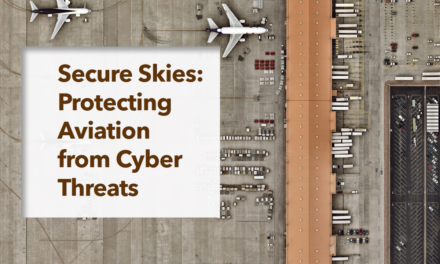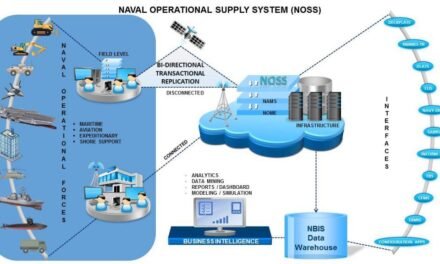Addressing space debris and orbital congestion is critical to ensuring the sustainability of space operations. As the number of satellites and spacecraft increases, so does the risk of collisions, which can generate more debris and threaten operational satellites, the International Space Station (ISS), and future missions. To mitigate these risks, a combination of regulatory frameworks, active debris removal technologies, and operational best practices are being implemented. Here’s a detailed overview:
1. Prevention of New Debris
Designing for Deorbiting
- End-of-Life Disposal:
- Satellites are designed to reenter Earth’s atmosphere and burn up at the end of their operational life.
- Low Earth Orbit (LEO):
- Satellites are required to deorbit within 25 years of mission end.
- Geostationary Earth Orbit (GEO):
- Satellites are moved to a “graveyard orbit” to avoid interfering with operational GEO satellites.
- Technology Examples:
- Drag Sails:
- Devices that increase atmospheric drag to accelerate orbital decay.
- Example: Surrey Satellite Technology’s RemoveDEBRIS mission demonstrated a drag sail.
- Propulsion Systems:
- Onboard propulsion for controlled reentry or transfer to a graveyard orbit.
- Drag Sails:
Durable and Reliable Designs
- Satellites and launch vehicles are designed to minimize the likelihood of fragmentation during their mission lifetimes.
Regulation of Anti-Satellite (ASAT) Tests
- Preventing debris-generating ASAT missile tests is essential for limiting large debris clouds.
- Example:
- The global community criticized destructive ASAT tests like those conducted by China (2007) and Russia (2021).
2. Mitigating Existing Debris
Active Debris Removal (ADR)
- Technologies are being developed to capture and deorbit defunct satellites and larger debris.
- Techniques:
- Robotic Arms:
- Capture and maneuver debris into controlled reentry paths.
- Example: ESA’s ClearSpace-1 mission plans to use a robotic arm to remove a defunct satellite.
- Harpoons:
- Penetrate and secure debris for towing.
- Example: Demonstrated on the RemoveDEBRIS mission.
- Nets:
- Capture large debris for removal.
- Example: The RemoveDEBRIS mission deployed a net to capture a simulated debris target.
- Laser Systems:
- Ground-based or space-based lasers nudge small debris into lower orbits for atmospheric reentry.
- Electromagnetic Tethers:
- Devices generate drag to bring debris into lower orbits.
- Robotic Arms:
Removal of Larger Objects
- Focus is on removing “high-risk” objects, like defunct satellites and spent rocket stages, which pose significant collision risks.
- Example:
- ESA’s e.Deorbit program aims to remove large debris in polar orbits.
3. Tracking and Monitoring Space Debris
Space Surveillance Networks
- Ground-based radar and telescopes track debris and satellites in orbit to predict potential collisions.
- Examples:
- U.S. Space Surveillance Network (SSN) tracks over 27,000 pieces of debris.
- ESA’s Space Debris Office maintains databases and conducts risk analyses.
Collision Avoidance Maneuvers
- Satellite operators use tracking data to adjust orbits and avoid collisions.
- Challenges:
- Increased satellite numbers make coordination and timely decision-making more complex.
Conjunction Assessments
- Predictions of close approaches (“conjunctions”) between space objects are shared with satellite operators to plan avoidance maneuvers.
4. Space Traffic Management (STM)
International Guidelines
- The United Nations Office for Outer Space Affairs (UNOOSA) and the Inter-Agency Space Debris Coordination Committee (IADC) provide guidelines for debris mitigation and orbital management.
- Example:
- The IADC’s “25-year rule” for deorbiting defunct satellites.
National and Industry Regulations
- Licensing Requirements:
- Governments require satellite operators to include debris mitigation measures in their mission plans.
- Example: The U.S. FCC mandates deorbiting plans for commercial satellites.
- Industry Standards:
- Collaboration among space agencies and private companies to establish best practices for orbital safety.
Space Traffic Coordination
- Proposed global frameworks aim to monitor and manage orbital traffic in real-time, similar to air traffic control systems.
- Example:
- The U.S. Department of Commerce is developing STM capabilities to support civil and commercial space operations.
5. Design Innovations for Sustainable Operations
Modular Satellites
- Modular designs allow satellites to be repaired or upgraded in orbit, reducing the need for replacement launches.
- Example:
- Northrop Grumman’s Mission Extension Vehicle (MEV) provides life-extension services for GEO satellites.
Self-Healing Materials
- Materials that can recover from micrometeoroid impacts reduce the generation of additional debris.
6. Collaboration and International Efforts
Shared Tracking Data
- Governments, space agencies, and private companies share tracking data to improve collision predictions and coordination.
- Example:
- Space-Track.org provides satellite catalog and debris data to global users.
International Treaties
- Strengthening agreements like the Outer Space Treaty (OST) to include stricter debris mitigation protocols.
Public-Private Partnerships
- Governments collaborate with private companies to develop innovative debris removal technologies and services.
7. Emerging Technologies
AI and Machine Learning
- AI improves tracking accuracy and collision avoidance by analyzing large datasets of orbital trajectories and debris characteristics.
- Example:
- AI systems predict debris paths and automate satellite maneuver planning.
On-Orbit Servicing
- Robotic systems repair or refuel satellites in orbit, extending their lifespans and reducing the number of replacements needed.
- Example:
- NASA and DARPA are investing in robotic servicing capabilities.
Spacecraft Autonomy
- Satellites equipped with autonomous navigation systems can independently avoid debris based on real-time tracking data.
Challenges in Addressing Space Debris
- Cost:
- Developing and deploying debris mitigation or removal technologies is expensive.
- Coordination:
- Orbital congestion requires international cooperation and standardized protocols.
- Technical Limitations:
- Capturing small or fast-moving debris remains a significant challenge.
- Legal and Liability Issues:
- Questions around ownership and responsibility for debris removal need resolution.
Conclusion
Addressing space debris and orbital congestion is a multifaceted challenge requiring technological innovation, international collaboration, and stringent regulatory frameworks. Proactive measures, such as designing satellites for safe disposal, improving tracking systems, and deploying active debris removal technologies, are critical for ensuring the long-term sustainability of space activities. As the number of satellites and missions grows, these efforts will become increasingly important to protect the orbital environment for future generations.
Hashtags
#SpaceDebris #OrbitalCongestion #DebrisManagement #SpaceSustainability #OrbitalCleanUp #SustainableSpace #EcoFriendlySpaceTech #GreenOrbitSolutions #CleanSpaceInitiatives #DebrisRemovalTech #SpaceCleanupInnovation #ActiveDebrisRemoval #CollisionAvoidance #SpaceTrafficManagement #DebrisPrevention #SatelliteDeorbiting













